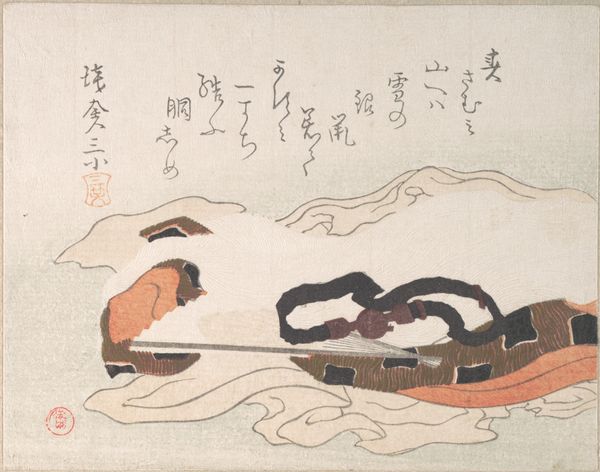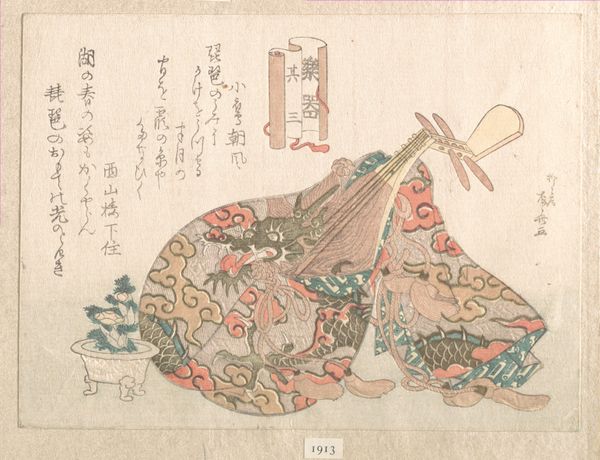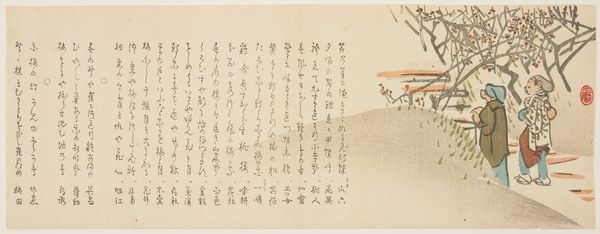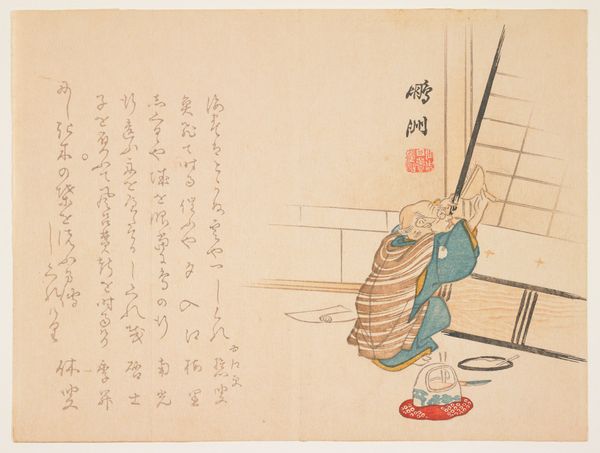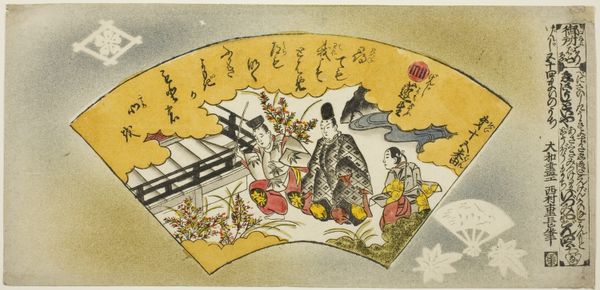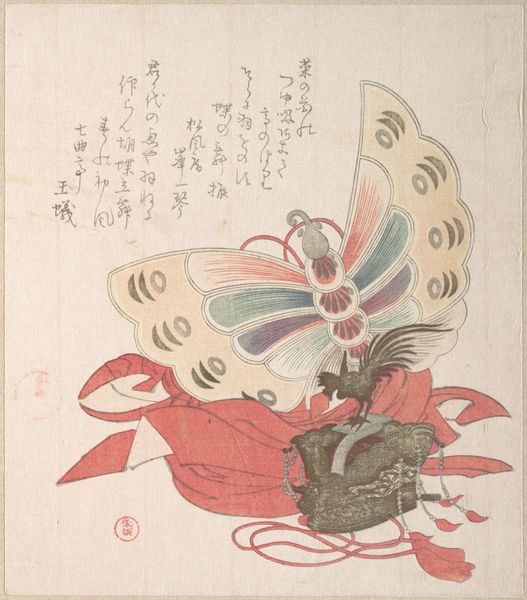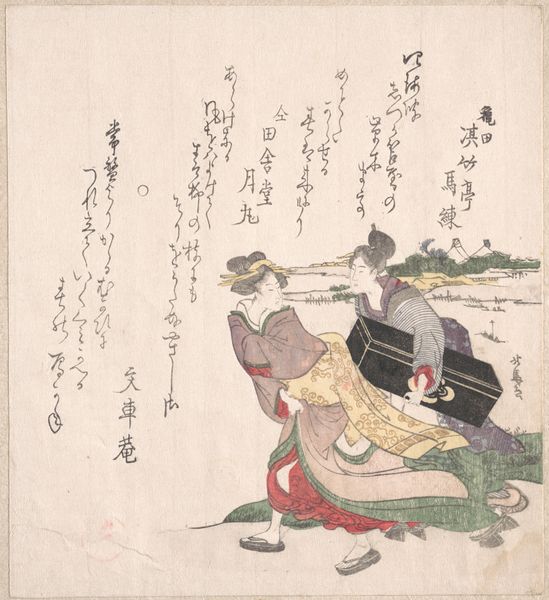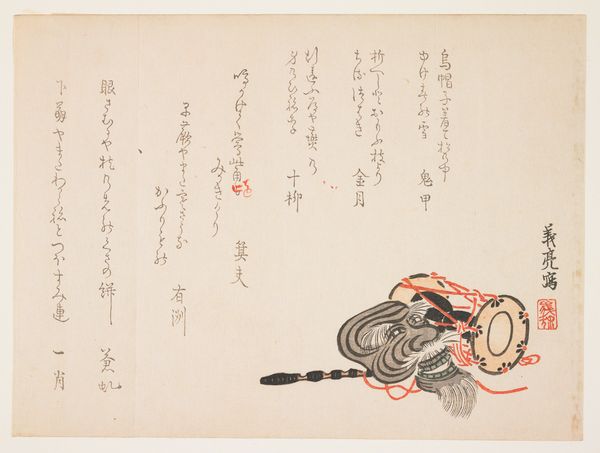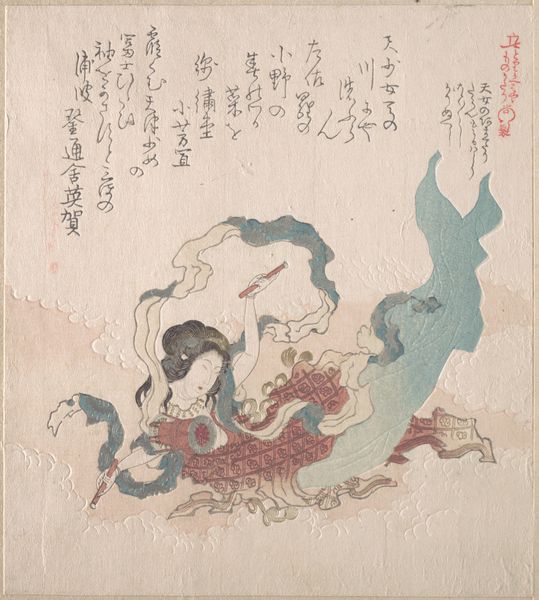
Index Page, prints .101-.150 (Vol.2), from the series "Pictures of No Performances (Nogaku Zue)" 1898
0:00
0:00
Dimensions: Approx. 25.2 × 37.4 cm (10 × 14 4/3 in.)
Copyright: Public Domain
Curator: What strikes me immediately about this image is the intriguing juxtaposition of fragility and raw power. The faded blue-gray gradient wash forming the backdrop emphasizes the dreamlike quality, amplifying the symbolism within the rest of the composition. Editor: Here we have a page from Tsukioka Kōgyo’s series, “Pictures of No Performances (Nogaku Zue)”, specifically “Index Page, prints .101-.150 (Vol.2)”, created in 1898. This woodblock print provides insight into the labor and capital behind ukiyo-e. You can appreciate the texture of the handmade washi paper; the layered approach of this piece, where one block creates the light blue, another the various text forms, floral motifs and details within the head. The materiality and means of production are key. Curator: Precisely! Notice how the stylized mask takes center stage, dominating the lower left corner of the artwork. This is the Buaku mask, and this mask, in particular, communicates intense rage and frustration within the wearer of this prop from the No theater tradition, connoting great importance from both religious and social perspectives. Editor: We cannot ignore that this image acts as an index. This image is an ordering system; a catalogue. This itself adds to the overall artistic effect; Tsukioka Kōgyo elevates functional components. Furthermore, understanding its place within a larger body of work draws attention to the workshop that printed and created this index: the production of meaning through labor. Curator: Yes, and the careful placement of floral details – like the violet placed near the bottom corner and a sprig of greenery attached to the Buaku mask – soften the imposing image and give way to themes of ephemeral beauty and the interconnectedness of all things, referencing Zen Buddhism and Daoist teachings. Also, behind the index is a subtle patterned kimono on the right side, reminding viewers of Japanese cultural sophistication in relation to this performance form. Editor: And to that I would add the names recorded on this print; the various sponsors, carvers, publishers; these laborers came together to produce these artworks in the turn of the 20th century. This print exists because someone carved, printed, collected, curated and here we are. This emphasis reveals something about how art endures as both an aesthetic experience and social product. Curator: Agreed. The composition definitely offers a sense of history. I find this work particularly evocative because it pulls me in several directions at once, but invites me to reflect on timeless human emotions through symbolic traditions. Editor: Indeed. Thinking through the history and materials of “Index Page, prints .101-.150 (Vol.2), from the series \"Pictures of No Performances (Nogaku Zue)\"” allows for deep understandings of Japanese popular aesthetics and how people engaged with these performances in that specific era.
Comments
No comments
Be the first to comment and join the conversation on the ultimate creative platform.
